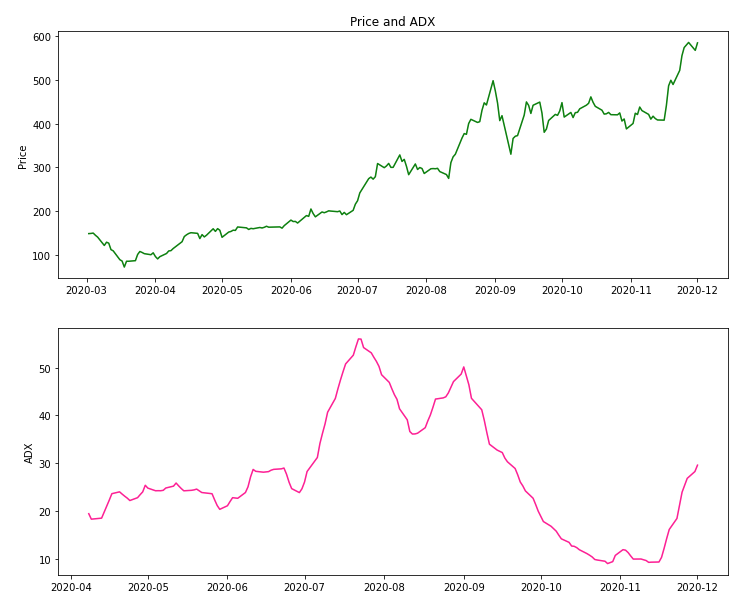Strength indicator: ADX
Financial Trading in Python

Chelsea Yang
Data Science Instructor
What is ADX?
- Stands for "Average Directional Movement Index"
- Developed by J. Welles Wilder
- "New Concepts in Technical Systems" (1987)

- Measures the strength of a trend
- Oscillates between 0 and 100
- ADX <= 25: no trend
- ADX > 25: trending market
- ADX > 50: strong trending market
How is ADX calculated?
- Derived from the smoothed averages of the difference between +DI and -DI
- +DI (Plus Directional Index): quantify the presence of an uptrend
- -DI (Minus Directional Index): quantify the presence of a downtrend
- Calculation input:
- high, low, and close prices of each period
Implementing ADX in Python
# Calculate ADX stock_data['ADX'] = talib.ADX(stock_data['High'], stock_data['Low'], stock_data['Close'], timeperiod=14)# Print the last five rows print(stock_data.tail())
Open High Low Close ADX
Date
2020-11-24 540.40 559.99 526.20 555.38 21.16
2020-11-25 550.06 574.00 545.37 574.00 23.92
2020-11-27 581.16 598.78 578.45 585.76 26.82
2020-11-30 602.21 607.80 554.51 567.60 28.25
2020-12-01 597.59 597.85 572.05 584.76 29.58
Plotting ADX
import matplotlib.pyplot as plt # Create subplots fig, (ax1, ax2) = plt.subplots(2)# Plot ADX with the price ax1.set_ylabel('Price') ax1.plot(stock_data['Close']) ax2.set_ylabel('ADX') ax2.plot(stock_data['ADX']) ax1.set_title('Price and ADX') plt.show()

Let's practice!
Financial Trading in Python

